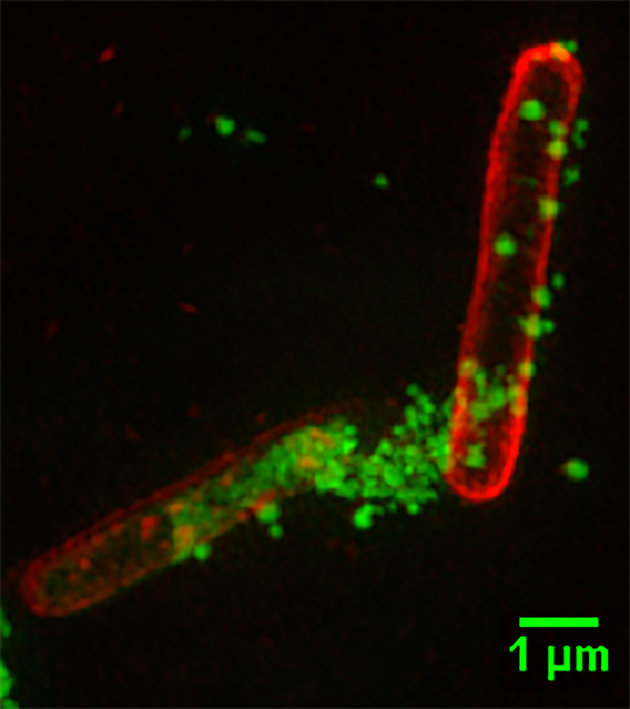Editor’s note: I first became aware of this issue around 2002 – long past when this shit started. Better then than never, I figure. In mid 2008 I read a piece in our local paper, on the back page, AP piece, that spoke of this issue, calling it “geoengineering” where it was said the plan was to begin spraying heavy metals via air plane exhaust systems into the air in order to combat global warming. “They” had to come up with something obviously given the growing attention to this issue. However there are still the trolls and the blind masses who refuse to awaken to this issue – some of them thinking the “clouds” are really “cool” looking. Ugh. … Thankfully this is becoming less “conspiratorial” and more mainstream-accepted as Truth. I believe it is one of the greatest threats to all life.
Arjun Walia, Collective-Evolution
Waking Times Media
One factor that’s commonly overlooked when it comes to talking about human health and environmental degradation is geo-engineering and Solar Radiation Management (SRM), also known as “chemtrails.” The name seems to come from the fact that various geo-engineering and SRM programs use stratospheric aresols like barium, nano aluminum-coated fiberglass [known as CHAFF], radioactive thorium, cadmium, chromium, nickel, desiccated blood, mold spores, yellow fungal mycotoxins, ethylene dibromide, polymer fibers and more.
Below is a video of multiple scientists, doctors and pilots telling the truth about “chemtrails.” It’s a very serious issue that’s often ridiculed and thrown into the conspiracy realm. As a result I attached information from an article I recently wrote about the subject.
VERY BRIEF HISTORY OF WEATHER MODIFICATION
“Weather modification is generally considered to be the deliberate effort to improve atmospheric conditions for beneficial human purposes . Not all weather modification activities, however, have been designed to benefit everyone, and have been used for purposes of war” (1)
“The US Navy launched a weapon capable of inducing a powerful earthquake on Haiti. This time it was only a drill, and the final part of it is destroying and taking over Iran.” -Hugo Chavez, (then) president of Venezuela
Weather modification dates back to the 1940’s, when the General Electric Company demonstrated that a cloud of super-cooled water droplets could be be transformed into ice crystals when seeded with dry ice. Shorty after this it was discovered that fine particles of pure silver iodide with a crystal structure similar to that of ice were effective for global weather modification. As a result:
“Silver iodide remains the most often used material in cloud seeding.” (1)
The above statement was made in the 1970’s, but so much more has happened since. With silver iodide began the birth of spraying stratospheric aerosols into the Earth’s atmosphere. Silver iodide spraying began in the 1950’s (1), and has since proven to be extremely toxic, especially for the environment, human and animal health. You can learn more about it here.
Aluminum is another thing. It’s highly toxic and also very damaging to the environment.
The idea of spraying aluminum into our atmosphere goes way back, patents exist that clearly demonstrate the consideration of such materials that include the oxides of metals which have high emissivity. These include harmful substances like aluminum oxide and thorium oxide. A great patent example is one from the Hughes Aircraft Company that dates all the way back to 1990, that’s over twenty years ago. You can take a look at it here.
Fast forward to today, with even more chemicals added to the mix, this gives us the basic gist of geoengineering programs (image below) and why so many people are concerned about them.
“We do stuff in the stratosphere all the time off-course, so it’s not as though the stratosphere is absolutely pristine. But you don’t want to have people going off and doing things that involve large radioactive forgings, or programs that go on for extended periods or for that matter provide lots of reactive surfaces that could result in significant ozone destruction.” – (taken from the first film cited at end of article)
M. Granger Morgan, Carnegie Mellon University, University and Lord Chair Professor of Engineering and Public Policy, National Academy of Sciences Member
MODERN DAY SPRAYING
“In addition to specific research programs sponsored by Federal agencies, there are other functions related to weather modification which are performed in several places in the executive branch. Various federal advisory panels and committees and their staffs – established to conduct in-depth studies and prepare reports, to provide advice or recommendations, or to coordinate weather modification programs – have been housed and supported within executive departments, agencies, or offices.” (1)
These programs are conduced by the department of defense, which means they remain classified, and why so many scientists and meteorologists don’t say anything about it. At the same time, all it really takes is observation.
Most of these programs are backed by the CIA and NASA, who are supporting the National Academy of Sciences with regards to geoengineering projects.(source)(source) Again, geo-engineering projects are any attempt to alter the way the planet or its weather systems operate, and as you can see, have been happening for a long time now.(source)(source)(source)(source) The weather was even modified in China for the 2008 Olympics.(source)
If you are a constant observer of the skies, as I am, it’s not hard to see that something is already going on. After a day of spraying, the trails don’t evaporate, they spread out and block the sun.
“Global dimming is another term people aren’t familiar with, 20 % of the Suns rays are not hitting the Earth. That means there’s a lot of metal up there” – Dane Wigington
Concerns have been voiced for years, by various individuals from all over the world. For example, Rosalind Peterson, president and Co-Founder of the Agriculture Defense Coalition (ADC), and x United States Department of Agriculture (USDA) employee stated at a 2007 United Nations hearing on global warming that:
“One of the things that’s affected by climate change is agriculture, but some of what we are seeing is man made, but man made in a different way than what you may guess. Weather modification programs, experimental ones done by private companies, the US government, are underway and there are more than 50 operations underway across the United States. All of these impact agriculture because they change the micro-climates needed for agriculture to survive. None of these programs are done with oversight. International corporations are modifying our weather all the time, and modifying it in ways that cover thousands and thousands of square miles. Most of it is chemically altered, so what happens is that we are putting ground based chemicals that are shot into the air that change and modify our weather.”
You can read more, and view that full hearing here.
Geoengineering and chemtrails are a huge issue, and when talking about climate and environmental degradation, it’s something that must be mentioned, the fact that it’s not is very suspicious, given the fact that they’ve been spraying for and modifying our climate for so long.
Dane Wigington has an extensive background in solar energy. He is a former employee of Bechtel Power Corp. and was a licensed contractor in California and Arizona. He is the lead researcher for www.geoengineeringwatch.org and has investigated all levels of geo engineering from chemtrails to HAARP. He assisted Michael Murphy with his production of “What in the World are They Spraying” and has appeared on an extensive number of interviews to explain the environmental dangers we face on a global level.
This article has provides a fraction of the information that`s available out there. I highly recommend watching these two (below) documentaries on the subject and visiting www.geoengineeringwatch.org for more information. The documentaries below include much more information, and a lot of scientific data.
Sourced from: http://wakingtimesmedia.com/pilots-doctors-scientists-tell-truth-chemtrails-geoengineering/?utm_source=Waking+Times+Newsletter&utm_campaign=60d975c6c7-RSS_EMAIL_CAMPAIGN&utm_medium=email&utm_term=0_25f1e048c1-60d975c6c7-54354961

 University of Melbourne
University of Melbourne





